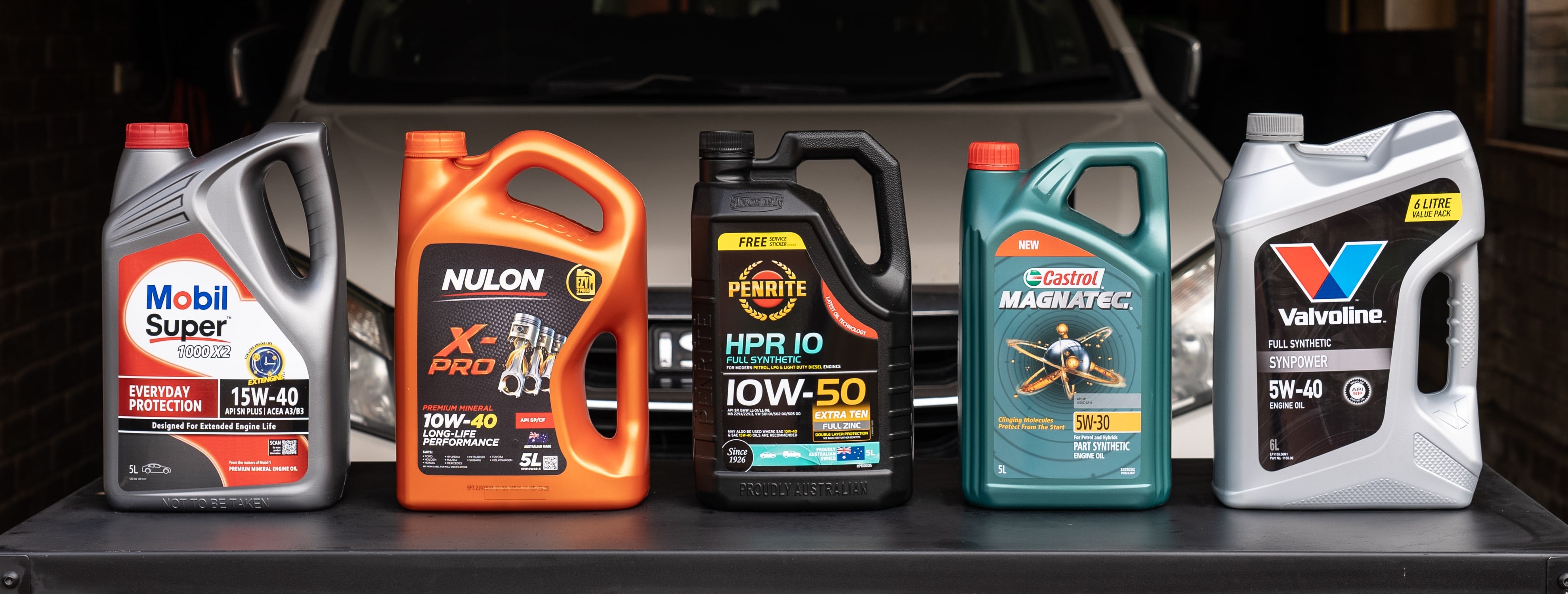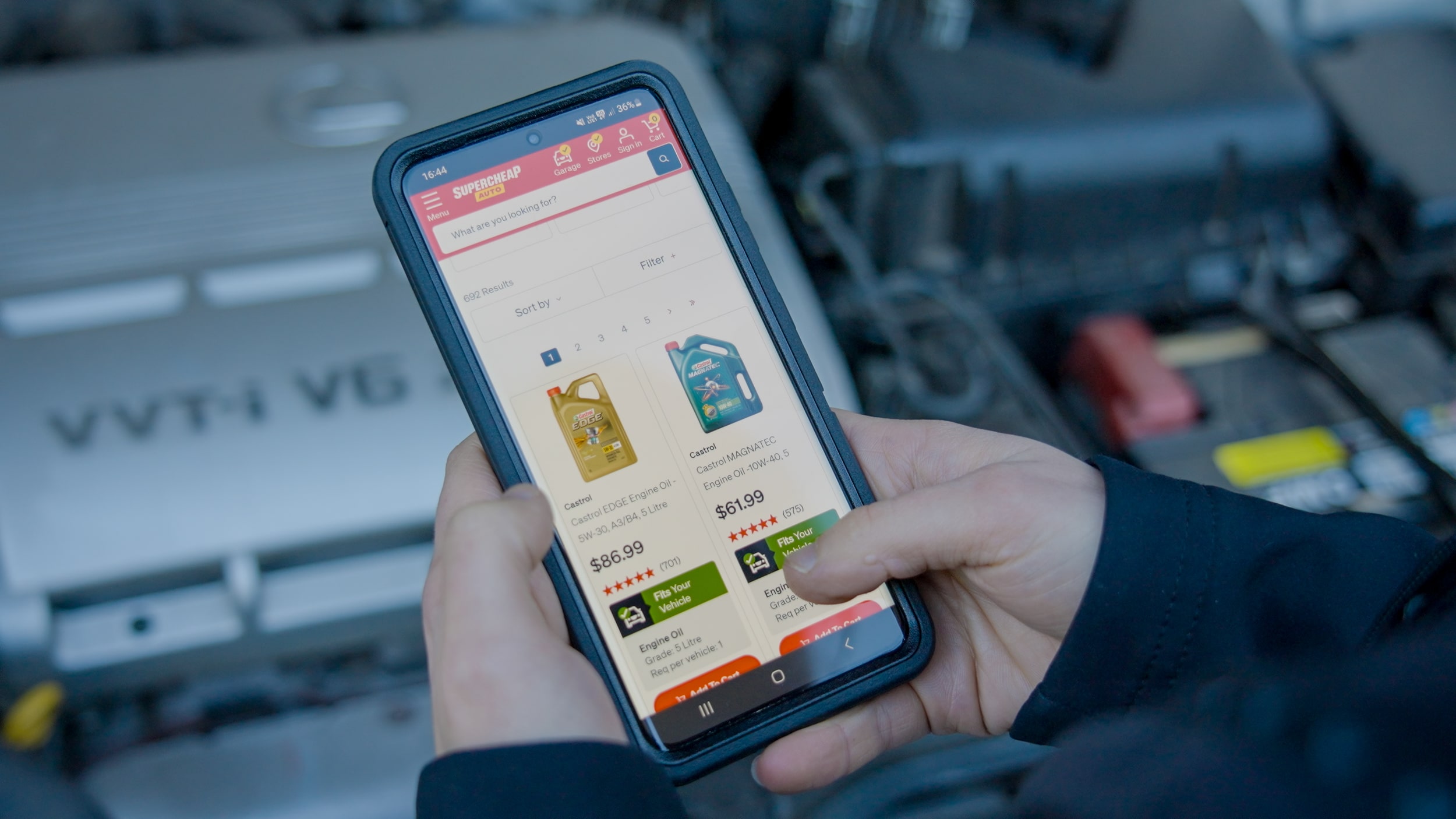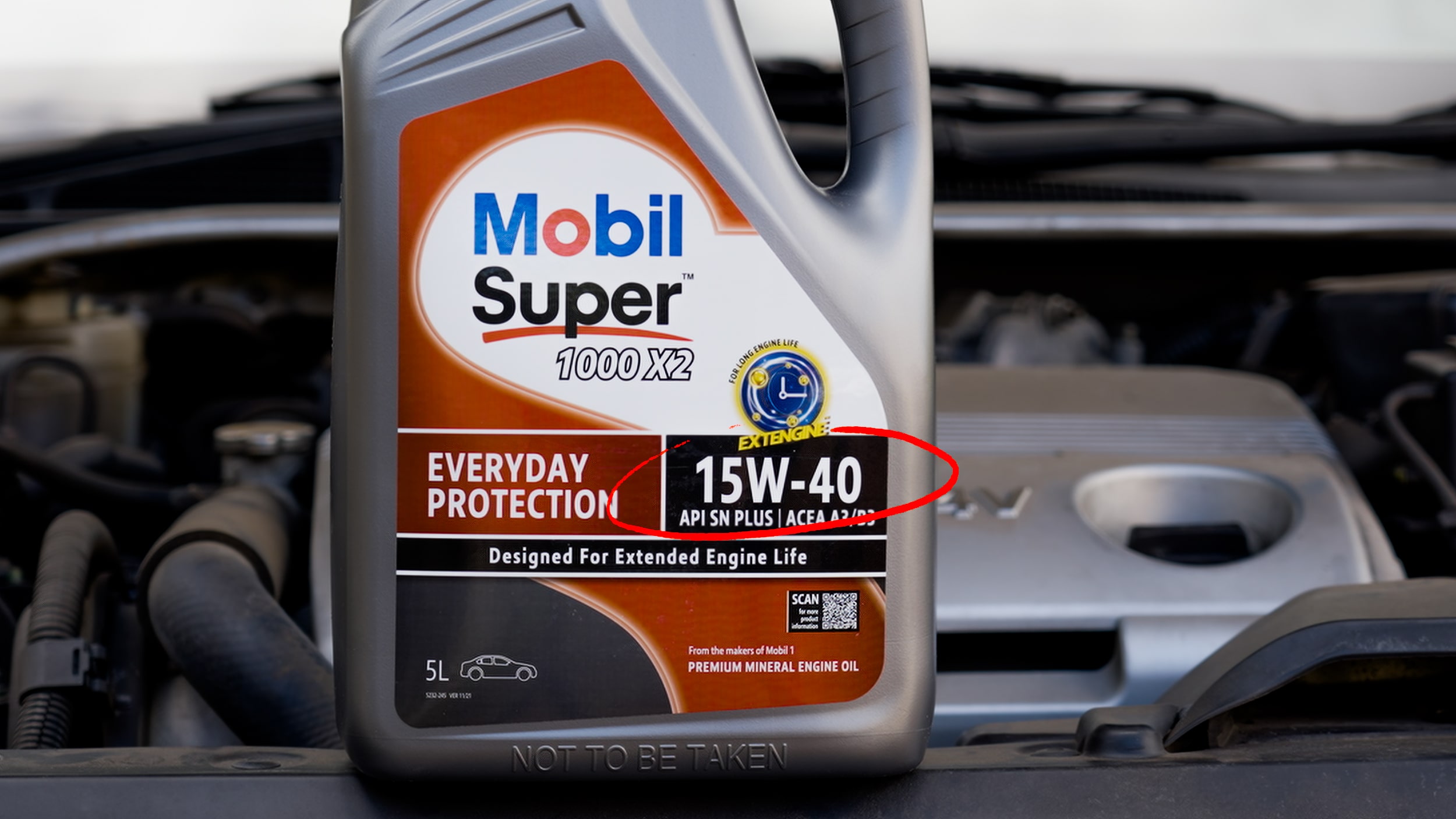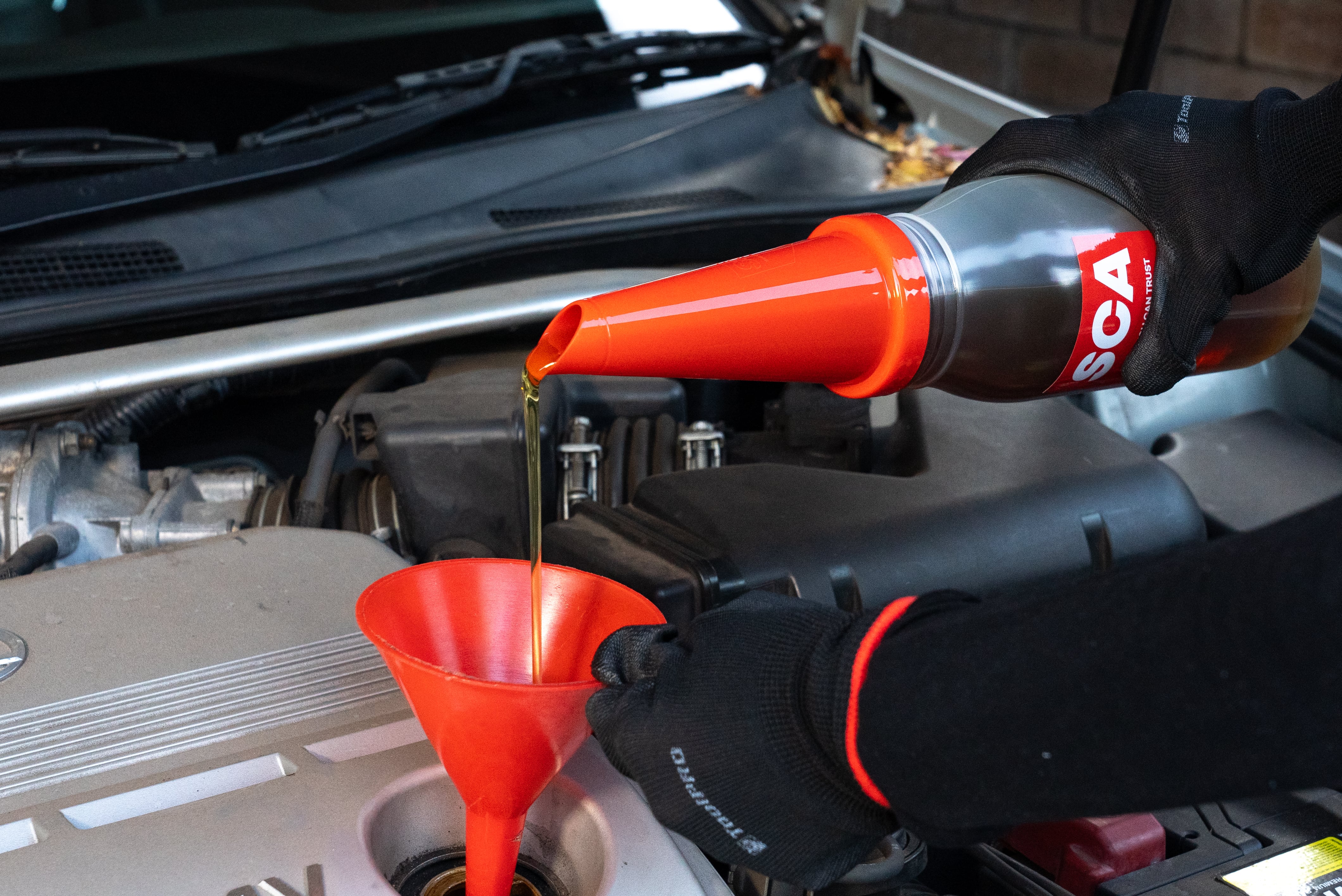Having engine oil in your car is SUPER important. But grabbing any old bottle of engine oil is just asking for trouble down the track. In this article we’ll help you understand the numbers and lingo so that you can embrace the range of engine oils at Supercheap Auto with confidence.
How Engine Oil Works
Although engine oil is poured into the top of your engine, it is actually stored at the bottom of your engine in the sump. The moment you turn the key or push the start button; a mechanical pump inside your engine begins circulating the oil around the engine.
The role of the engine oil is to maintain a thin film between moving parts in your engine to reduce friction and wear. It also absorbs heat to be dissipated through an oil cooler or the sump. Its final important job is to trap dirt, contaminants, and byproducts of combustion to be held in the oil and filter until your next oil change.

Why Engine Oil Turns Black
Engine oil turns black primarily as a result of those contaminants. The high temperature inside your engine also causes oil to oxidize and break down over time, contributing to the blackening of your engine oil. When engine oil is black, it’s time for an engine oil and filter change. And you're in luck, we have a handy DIY video which shows you step-by-step how to change your engine oil and oil filter to keep your car running smoothly.


Which Engine Oil For My Car?
The easiest way to find which engine oil for your car is by using the My Garage feature on the Supercheap Auto website. Just enter your registration number to find your vehicle, then search for Engine Oil to see suitable products in a range of brands and sizes.

Alternatively, you can check your owner’s manual. Here you will find the oil classification and oil grade required for your vehicle.
What engine oil classification should I use?
The oil classification you’ll find most prominent on most engine oil at Supercheap Auto is SAE Meaning ‘Society of Automotive Engineers’. It appears as two sets of numbers, the first one followed by a W.


However, in finer print on most bottles of engine oil you’ll find other classifications which may be recommended in your owner’s manual such as:
- SAE meaning ‘Society of Automotive Engineers’
- API meaning ‘American Petroleum Institute’
- JASO meaning ‘Japanese Automotive Standards Organisation’
- ACEA meaning ‘Association des Constructeurs Européens d’Automobiles’
- ILSAC meaning ‘International Lubricant Standardization and Approval Committee’
What do the numbers on engine oil mean?
The numbers on a bottle of engine oil indicate the weight of that oil. Weight refers to the viscosity of the oil and how fast it flows at a set temperature. The higher the number, the thicker the oil and the slower it flows. An example of how this may appear on an oil bottle is SAE 30.
Most oils today are multigrade, meaning they flow at a different rate depending on their temperature. An example of how it would appear on the bottle is: SAE 10W-30
The first number is followed by a W, which stands for ‘winter’. As it is a lower number it flows faster, but only when the engine is cold. As the engine warms up, the oil acts as a thicker oil for more protection. This is where the higher number is given.
Thick VS Thin oil. What engine oil for my car?
It may seem that a thin, fast flowing engine oil will always be better, but that’s not the case. To use some of the thinnest engine oils such as a 0W-20, your engine must be designed for it. Using too thin of an engine oil will result in much faster engine wear.
On the other hand, using an engine that’s thicker than your engine is designed for, such as a 20W-60 will result in poor performance and fuel economy. As it is harder to pump there will be increased engine wear and strain on components.


Full Synthetic, Semi-Synthetic and mineral. Which engine oil is best?
Mineral oil is a no-frills product refined from crude engine oil. It provides decent protection and lubrication, but it does break down quicker, meaning more frequent engine oil changes. Older engines LOVE mineral oil but don’t tend to function so well on Full Synthetic or Semi-Synthetic oil.
Full Synthetic oils are chemically engineered in a lab rather than pumped from the ground. They are preferred by new and high-performance engines. Full Synthetic oil provides better lubrication and resistance to high temperature. It can cope with longer service intervals without breaking down.
Full Synthetic sounds great, and it is. But old engines and diesel engines don’t tend to like it as much.
Semi-Synthetic oils are a blend of the previous two oil types offering a good middle ground in price and performance that suits a wide range of vehicles. Semi-Synthetic engine oil is especially preferred by turbo diesel engines.


Can I use an engine oil without additives?
Every engine oil has some amount of additives. The additives play an important role in the performance of engine oil. It’s the engine oil additives that allow multigrade oil to be possible. Additives are what gives the engine oil better cleaning and lubrication properties. So even if it was possible to get an engine oil without additives, you wouldn’t really want to use it!
Engine oil made SUPER easy
There is always more to know about engine oil. And while you can get very scientific about choosing the right oil for you; it doesn’t have to be complicated. Choosing the right engine oil can be SUPER simple with the help of the Supercheap Auto store team, or the My Garage feature online.
*Important information* - Click here to read more about our DIY Advice Terms and Conditions.